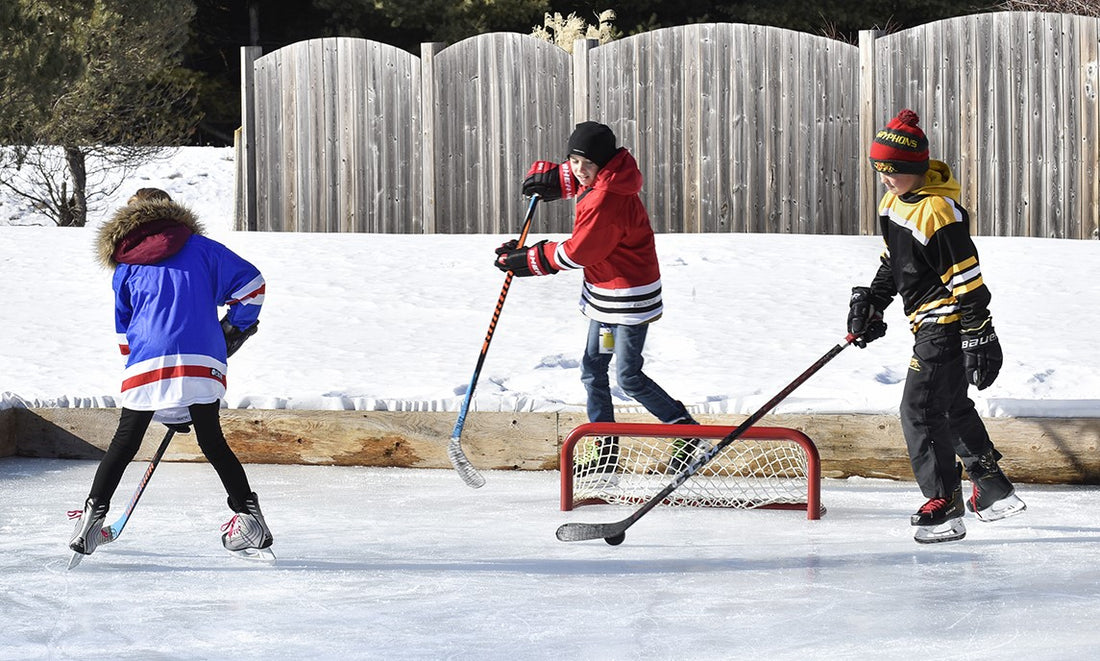
Planning Water for your ODR
Share
Here's what we've gathered over the years:
The Hose: When it comes to dealing with hoses, there are two options. The first involves draining the hose after each use, ensuring no water remains inside. You lift one end of the hose high, allowing the water to flow out the other end as you move along its length. Keep in mind that this method isn't foolproof; any residual water can freeze, rendering the hose unusable until it thaws, which might mean bringing it inside your house.
The second option is more convenient. You can use a hose reel, which allows you to store the entire reel and hose indoors, perhaps near your back kitchen door, mudroom, or a warm space. It keeps the hose ready and thawed whenever you need to flood your rink. While some household members may grumble about storing garden equipment in the kitchen, your desire for a fantastic rink usually wins out!
The Tap: Your choice of tap matters significantly. The ideal option is a hydrant faucet (pictured below), functioning much like a fire hydrant. When you turn the tap handle on the outside wall, it shuts off water some distance inside the wall, typically 8 to 12 inches. This part remains in the warm interior of your house, ensuring the tap never freezes. It's a beautifully practical solution.
Another option is using your regular outside faucet. If it's not a hydrant faucet, you'll need to turn the water on and off at the shutoff, usually in the basement.
Alternatively, you can keep a hose in the basement, taking it out through a window when it's time to flood and bringing it back inside when you're done.
Regardless of your setup, you'll quickly realize that making a backyard rink is a bit more challenging than watering summer flowers. But the rewards are certainly worth the effort. Thanks for checking in with us!
The RinkMaster Team


